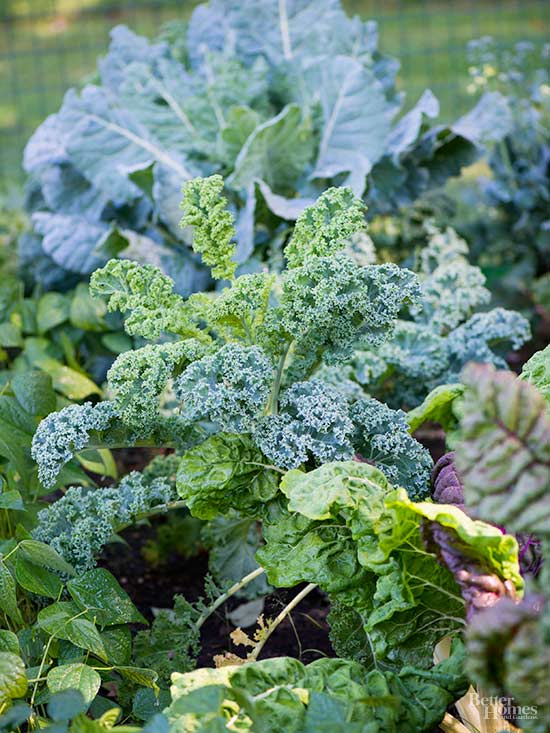






When to Plant Kale: Kale loves cool weather, so plant it in spring or fall in a sunny location.
How to Plant Kale: Begin with kale seeds or kale plants. Seeds are cheaper and grow easily. Sow seeds 2 inches apart in rows 12 to 18 inches apart. Cover kale seeds with 1/2 inch of soil, and keep the soil evenly moist (but not soaking wet) for best germination. You can start seeds indoors in late winter then transplant the seedlings into the garden, or sow them directly in the ground in early spring, about 3 weeks before the last frost, and again in late summer, 6 to 8 weeks before the first frost.
If you start with kale plants, place them in the ground at the same depth as their roots were growing in the pot, spacing them 18 to 24 inches apart.
Mulch with an organic material such as bark, shredded leaves, compost, or cocoa bean hulls to retain soil moisture and keep weeds at bay.
Watering Kale: Kale needs about 1 to 2 inches of water per week; water deeply once if you haven't received sufficient rain.
continue reading belowWhen the plants have six to eight leaves, use scissors to cut off just the outer leaves, leaving at least four leaves in the center to produce more leaves. Kale leaves actually taste sweeter after they've been through a light frost. Most kale plants continue growing through the winter in milder climates.
After buying or harvesting kale, place it in a plastic storage bag. Push out as much air from the bag as possible. Exposure to water encourages spoilage, so wait to wash the kale leaves until just before you use them. Kale keeps in a refrigerator for about five days; after that, the leaves become bitter. Immediately before using, rinse kale leaves under warm running water and gently rub the leaves to tenderize them.
Pull out the plants when they begin blooming. At this point, leaves begin to taste tough and bitter.
Kale is relatively pest-free, but if you have cabbage loopers -- small, hungry caterpillars that can chew up your crop -- try a product such as Dipel or Thuricide containing Bt (Bacillus thuringiensis, a naturally occurring bacterial insecticide that's considered food-safe) or just pick them off by hand, a more organic practice.
Wondering about the difference between flowering kale and vegetable kale? Both are edible, and many of the varieties sold for culinary use also look beautiful growing in a garden. Flowering kale doesn't actually produce flowers, but the patterns and colors of its leaves look as if flowers are blooming. Flowering kale is edible but tough.
Smooth-leaf kale varieties such as Olympic Red, Red Russian, Scarlet, and Smooth German are excellent for salads.
To make kale chips, plant a curly kale such as Lacinato (also called dinosaur or Tuscan kale), Dwarf Blue, Siberian, or Winterbor. All of these kales grow thick leaves that stand up well to baking. Massage the leaves well to break down the tough tissues if you use these in a salad.
All types work well for cooking or whirled into smoothies.
Copyright © www.100flowers.win Botanic Garden All Rights Reserved